Architects explore urbanism, heritage and power at Deoksugung Palace in Seoul
‘Architecture and Heritage: Unearthing Future’ organised by the National Museum of Modern and Contemporary Art Seoul unites imaginative installations by five international architects at the historic Deoksugung Palace

In the heart of Seoul there is always some peace to be found within the walls of one of the Five Grand Palaces, built during the Joseon dynasty (1392 – 1897) to house the imperial families. Entering the ancient compounds is like stepping into another beautifully preserved era. At Deoksugung, the palace neighbouring City Hall and the National Museum of Modern and Contemporary Art (MMCA), during your visit you will find a few unexpected – and very much 21st century structures – have popped up between the traditional sweeping eaves and connecting courtyards.
From a floating video unlocking portals into imagined worlds, to a roving set of multi-functional furniture pieces, the installations enliven the palace grounds with ideas exploring the relationship between architecture, urbanism and heritage on the occasion of the centennial of the first Emperor Gojong’s passing and the March First Independence Movement. While these events marked the start of Korea’s modern era, rulers were still very much grappling with how modernity would sit alongside traditions and heritage of the past politically.
Curator Lee Jihoi enlisted the stellar group of architects – CL3, Bureau Spectacular, OBBA, Obra Architects, Space Popular – to envision ‘a new interpretation of the Korean Empire’s dream for future city on the brink of modernism’. This imaginative framework provoked questions also relevant to today such as, how can the past and present exist in harmony together?

CL3 Architects Furniture for an emperor in transition.
Even in the face of remarkable amounts of change from the Joseon era until today – invasion, industrialisation, westernisation – the palaces maintained their stoic presence in the city. With this in mind, the idea of ‘transition’ was a starting point for CL3 Architects, and the theme was also relevant to us now, in the context of mobility, displacement and migration.
William Lim, founder and chief architect of CL3, designed a set of furniture on wheels for Gojong, the last King of Joseon and the first Emperor of Korea. Mixing cross-cultural references – the common push-cart seen in many Asian cities meets a Palanquin imperial carriage, Le Corbusier-designed furniture meets traditional Korean furniture – the roving set features everything from a chaise lounge to a garden storage unit, and is fully equipped for an era of instability.
Space Popular, Frederik Hellberg and Lara Lesmes, became absorbed in the rich architectural ornamentation, colourful painted timber and stucco decoration of the palace, and its imperial role of communicating an aura of splendour and power to its audiences. At the Gwangmyeongmun Gate, which played an important role in this spectacle, their site specific video installation plays out, leading viewers through a series of 1:1 gates. The portals open up and traverse from an imperial interior, to a modern-day chat room, opening and closing each time to reveal an even more surreal space.
The architects compare the draw of this historic gate and its capacity to communicate to society through architecture, to the television screen of the 1950s, and now the screens in our pockets, the feeds and the VR goggles through which we enter virtual worlds each broadcasting their own ideas. Packed with technicolour, pattern and animated objects, the work concludes that while the tools with which we communicate might change, our nature as humans, with an innate need to express ideas with the visual objects around us, stays the same.
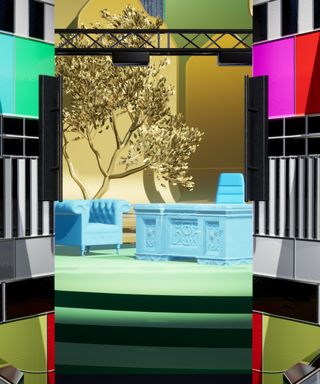
Video still from The Gate of Bright Lights, Space Popular
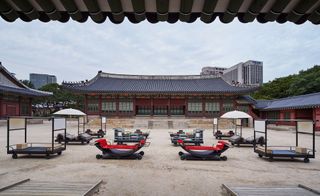
Furniture for an emperor in transition, CL3 Architects

Video still from The Gate of Bright Lights, Space Popular
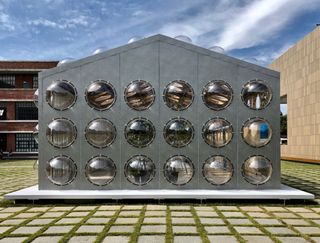
Obra Architects’ Perpetual Spring pavilion ponders the historical assertion of how a revolution prefers fair weather attested first with The Spring of Nations of 1848, with The Prague Spring of 1968 and, more recently, with The Arab Spring of 2010. The pavilion aspires to artificially perpetuate the climatic conditions propitious to progressive social change
INFORMATION
‘Architecture and Heritage: Unearthing Future’; until 11 April 2020.
Wallpaper* Newsletter
Receive our daily digest of inspiration, escapism and design stories from around the world direct to your inbox
ADDRESS
Deoksugung Palace
99 Sejong-daero
Jeong-dong
Jung-gu
Seoul
South Korea
Harriet Thorpe is a writer, journalist and editor covering architecture, design and culture, with particular interest in sustainability, 20th-century architecture and community. After studying History of Art at the School of Oriental and African Studies (SOAS) and Journalism at City University in London, she developed her interest in architecture working at Wallpaper* magazine and today contributes to Wallpaper*, The World of Interiors and Icon magazine, amongst other titles. She is author of The Sustainable City (2022, Hoxton Mini Press), a book about sustainable architecture in London, and the Modern Cambridge Map (2023, Blue Crow Media), a map of 20th-century architecture in Cambridge, the city where she grew up.
-
 Ikea introduces its first gaming furniture collection
Ikea introduces its first gaming furniture collectionBrännboll is the first Ikea gaming furniture collection, unveiled during Milan Design Week 2024 and designed to swiftly transform a domestic space into a gamer’s paradise
By Jasper Spires Published
-
 Morgan take their classic roadster and give it subtle but significant tweaks for 2024
Morgan take their classic roadster and give it subtle but significant tweaks for 2024New details and features give the compulsive Morgan Plus Four an even more pared back silhouette and driving ability
By Jonathan Bell Published
-
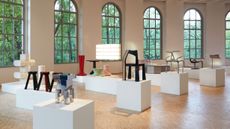 Wallpaper* Class of '24 exhibition now open at Triennale Milano
Wallpaper* Class of '24 exhibition now open at Triennale MilanoWallpaper* Class of '24 exhibition at Triennale spotlights international emerging talent in furniture and product design, with the support of AHEC and SNOW (until 21 April 2024)
By Rosa Bertoli Published
-
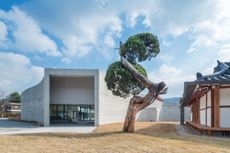 Architect Byoung Cho on nature, imperfection and interconnectedness
Architect Byoung Cho on nature, imperfection and interconnectednessSouth Korean architect Byoung Cho’s characterful projects celebrate the quirks of nature and the interconnectedness of all things
By Ellie Stathaki Published
-
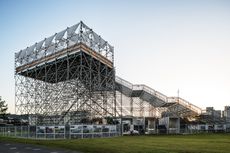 2023 Seoul Biennale of architecture invites visitors to step into the outdoors
2023 Seoul Biennale of architecture invites visitors to step into the outdoorsSeoul Biennale of Architecture and Urbanism 2023 has launched in the South Korean capital, running themes around nature and land through the lens of urbanism
By SuhYoung Yun Published
-
 Tadao Ando’s ‘Space of Light’, a meditation pavilion, opens in South Korea
Tadao Ando’s ‘Space of Light’, a meditation pavilion, opens in South KoreaTadao Ando’s ‘Space of Light’ pavilion opens at Museum SAN in South Korea
By SuhYoung Yun Published
-
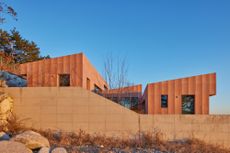 Seosaeng House is a holiday home designed to capture the rising sun
Seosaeng House is a holiday home designed to capture the rising sunSeosaeng House, Studio Weave’s first project in South Korea, is a clifftop holiday home perfectly designed to capture a new day dawning over the East Sea
By SuhYoung Yun Published
-
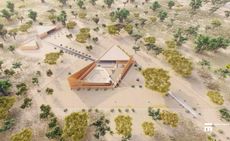 Mariam Issoufou Kamara to design Bët-bi museum in Senegal
Mariam Issoufou Kamara to design Bët-bi museum in SenegalMariam Issoufou Kamara, founder of Atelier Masōmī in Niger, has been selected by a jury to lead the design of the new Bët-bi museum in the Senegambia region of West Africa
By Hannah Silver Last updated
-
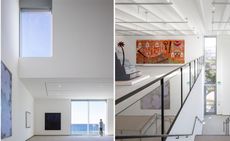 The Museum of Contemporary Art San Diego unveils a bigger and brighter new space
The Museum of Contemporary Art San Diego unveils a bigger and brighter new spaceSelldorf Architects has welcomed the elements in to the Museum of Contemporary Art San Diego’s new light-filled design
By Hannah Silver Last updated
-
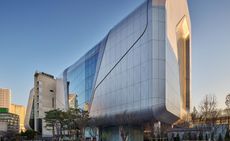 K-Pop hit factory gets a futuristic new office in Seoul
K-Pop hit factory gets a futuristic new office in SeoulUNStudio completes headquarters building for leaders in K-Pop scene YG Entertainment, in Seoul
By Ellie Stathaki Last updated
-
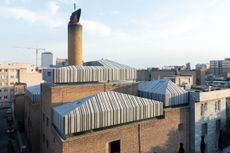 Tehran’s Argo Factory complex reinvents brewery architecture for the arts
Tehran’s Argo Factory complex reinvents brewery architecture for the artsThe Argo Factory Contemporary Art Museum & Cultural Centre by Ahmadreza Schricker Architecture North (ASA North), housed in a redesigned brewery, becomes Tehran's first new arts hub in decades
By Ellie Stathaki Last updated